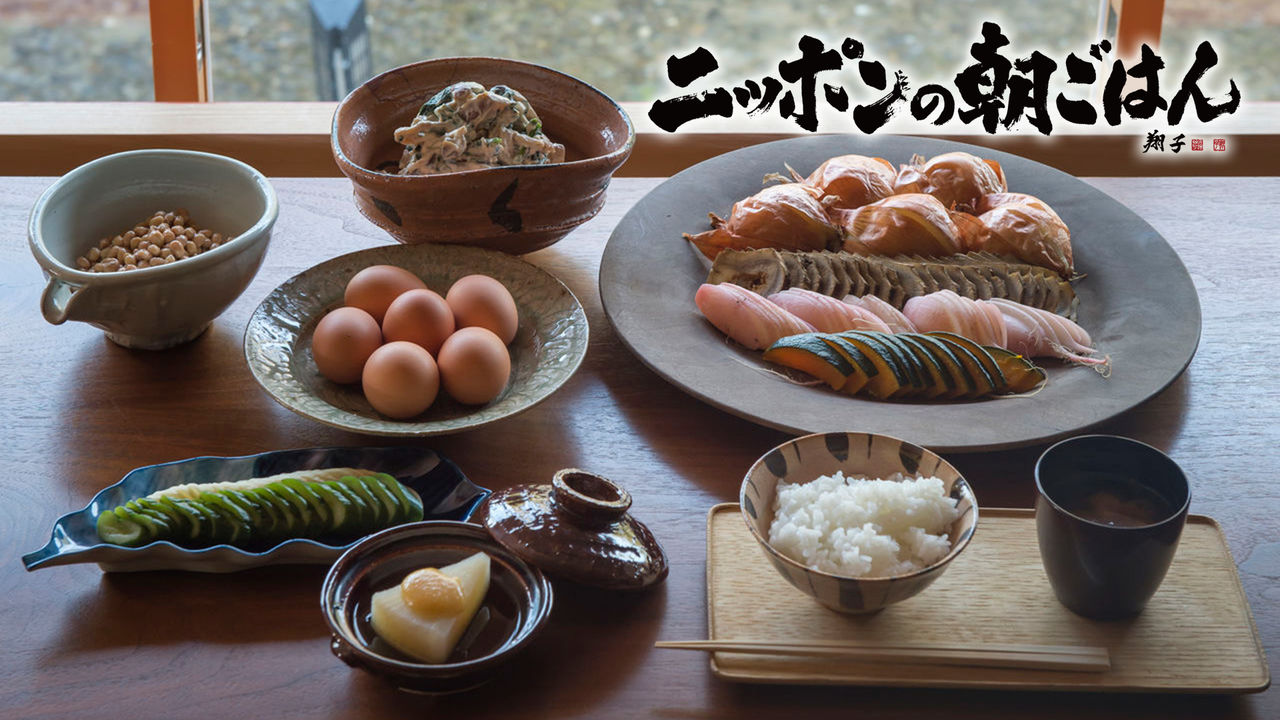
Breakfast Around Japan: A Culinary Adventure
Breakfast in Kyoto’s Historic Higashiyama: “Tan” Serves Homestyle Food with “Ryōtei” Pedigree
Guideto Japan
Food and Drink Lifestyle Travel- English
- 日本語
- 简体字
- 繁體字
- Français
- Español
- العربية
- Русский
Menu
- Seasonal vegetables with tōfu-sesame dressing (shira-ae)
- Tango vegetable medley
- House nattō (fermented soybeans)
- Premium eggs (raw)
- Stewed daikon with yuzu miso sauce
- Pickled gourd
- White rice
- Miso soup
Our destination this morning is an elegantly simple, spotlessly clean Japanese-modern storefront delicately framed by the willows that line the banks of the Shirakawa canal in Kyoto’s historic Higashiyama Sanjō neighborhood. Its name is Tan, a reference to Tango Peninsula on the north coast of Kyoto Prefecture. Opened in 2016 by Kuwamura Yūko, proprietress of the legendary ryōtei Kōdaiji Wakuden, Tan has asserted its own distinct identity centered on homestyle cooking using fresh produce from nearby Tango (where Wakuden has its roots). Its focus is breakfast and lunch featuring locally grown organic vegetables and homemade condiments served up in a family-style setting.
Why such a radical departure from the model of Kōdaiji Wakuden, Kuwamura’s acclaimed flagship restaurant?
“For one thing,” Kuwamura explains, “the vegetables we use are organic and locally grown in Tango, either in our own fields or by other organic farmers in the area. It’s not easy for these farmers to make a living, but they keep at it because it’s something they believe in. Often, they’re up before dawn picking fresh vegetables to deliver to our doorstep, and I thought those vegetables deserved to be eaten at their freshest, instead of waiting until evening. That’s one reason.”
But Kuwamura was also motivated by a desire to address issues of work-life balance and gender inequality in the Japanese restaurant industry—a goal consistent with the government’s push for workplace reforms to attract women into the labor force.
“The kitchen of a ryōtei operates under a very hierarchical, male-dominated apprenticeship system. By shifting the focus of the menu to homestyle cooking, I’m trying to get away from that rigid hierarchy and create an environment where men and women can work together on a level playing field.”
Not every trace of ryōtei culture has disappeared; in fact, the kitchen is overseen by chef Kitajima Yasunori, who apprenticed at Wakuden. But Tan is committed to providing all of its employees—including a conspicuous number of working mothers—with decent wages, satisfying work, and equal opportunity for advancement. While Kuwamura is still tweaking her business plan with a view to financial sustainability, the concept of family-style dining is basic to her vision.
Breakfast at Tan epitomizes this concept. Guests seat themselves around a long communal table, serving themselves from large bowls and platters and passing them around to fellow diners amid an atmosphere of conviviality.
“I think back on times when I stopped by a friend’s house and was treated to a wonderful meal cooked up lovingly just with the ingredients at hand,” recalls Kuwamura. “And it seems to me that there’s no more gratifying form of hospitality.”
Another major theme at Tan is healthy eating. Some years back, Kuwamura had a health crisis triggered by the long hours and stress that come with running a new restaurant. Today, she is the picture of good health, and she attributes her recovery to a diet centered on fresh, locally grown organic vegetables and traditional Japanese fermented foods, such as nattō and pickles.
Tan takes full advantage of its location along the picturesque, tree-lined Shirakawa canal in this historic Kyoto neighborhood. The front entrance is left open whenever weather permits to welcome in a soft, refreshing breeze, together with the gentle rustling of the willow, creating an ideal ambience for the first meal of the day.
When we visited, the menu was as follows.
Warm dashi broth
Instead of tea, guests are greeted with a cup of fragrant dashi broth in a handcrafted bowl, its depth and refinement attesting to Tan’s ryōtei pedigree.
Umeboshi
The pickled plums are a specialty of nearby Wakayama Prefecture.
Vegetables in season with tōfu-sesame dressing (shira-ae)
Locally sourced yams, spinach, smoked daikon radish, and oyster mushrooms are dressed in a creamy sesame-flavored tōfu-based sauce (a specialty of Wakuden). Cream cheese adds a distinctive richness to the dressing.
Tango vegetable medley
Baby onions roasted in their skins, Ōura gobō (burdock root), pink radishes, and kabocha squash, accompanied by organic Portuguese olive oil, house saimiso (a condiment made from soy sauce mash and minced vegetables), and natural Portuguese flor de sal sea salt.
House nattō (fermented soybeans)
The restaurant ferments its own nattō using premium Suzumaru soybeans grown in Hokkaidō.
Premium eggs (raw)
Chef Kitajima Yasunori hand-picks these top-quality eggs produced in nearby Hyōgo Prefecture, prized for their deep, intense flavor.
Stewed daikon with yuzu miso sauce
Round daikon radish, stewed until tender, topped with white miso sauce infused with the fragrance of yuzu zest.
Pickled gourd
White rice
Miso soup
 Rice is steamed in an old-fashioned earthenware pot.
Rice is steamed in an old-fashioned earthenware pot.
 Tableware handcrafted by Japanese artisans echoes Tan’s theme of casual, homey elegance.
Tableware handcrafted by Japanese artisans echoes Tan’s theme of casual, homey elegance.
 Benefiting from the area’s thriving tourism industry, Tan attracts a diverse clientele.
Benefiting from the area’s thriving tourism industry, Tan attracts a diverse clientele.
 Strangers bond quickly at Tan’s communal breakfast table.
Strangers bond quickly at Tan’s communal breakfast table.
 Upstairs, guests can linger over coffee while enjoying the scenery along Shirakawa canal.
Upstairs, guests can linger over coffee while enjoying the scenery along Shirakawa canal.
Tan
Address: 106-13 Gokenchō, Higashiyama-ku, Kyoto, 605-0036, Kyoto Prefecture
Phone: +81-(0)75-533-7744
Website (in Japanese only): http://www.tan.kyoto.jp/
Breakfast served: 8:00–10:00 am (last orders at 9:30)
(Originally published in Japanese on April 30, 2018. Photos by Kusumoto Ryō. Series title written by Kanazawa Shōko.)
Kyoto tourism food Washoku cuisine Breakfast Around Japan Breakfast Around Japan: A Culinary Adventure Higashiyama Sanjō


